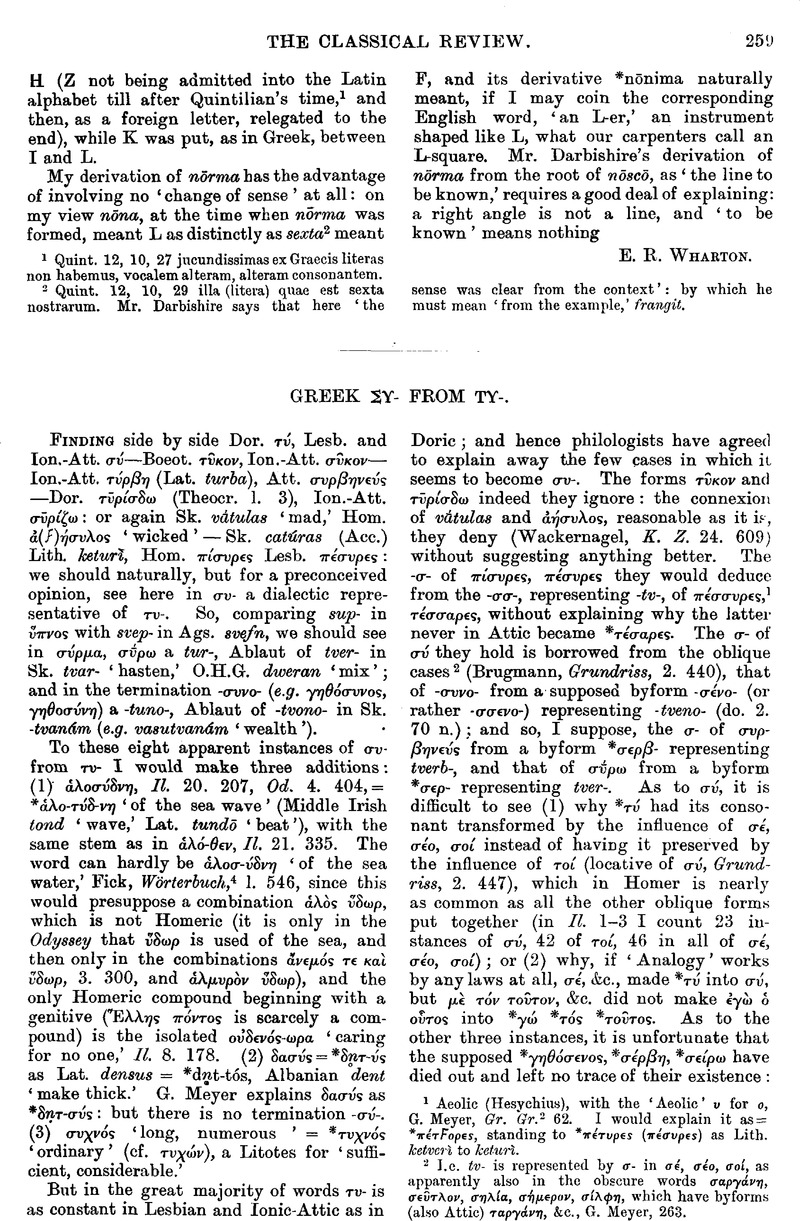No CrossRef data available.
Article contents
Abstract

- Type
- Review Article
- Information
- Copyright
- Copyright © The Classical Association 1892
References
page 259 note 1 Aeolic (Hesychius), with the ‘Aeolic’ v for o, G. Meyer, Gr. Gr.2 62. I would explain it as = *π⋯τFορες standing to *π⋯τυες (π⋯συρες) as Lith. ketverì to keturì.
page 259 note 2 I.e. tv- is represented by σ- in σ⋯, σ⋯ο, σο⋯ as apparently also in the obscure words σαργ⋯νη, σε![]() τλον, σηλ⋯α, σ⋯μερον, σ⋯λϕη, which have byforms (also Attic) ταργ⋯νη, &c, G. Meyer, 263.
τλον, σηλ⋯α, σ⋯μερον, σ⋯λϕη, which have byforms (also Attic) ταργ⋯νη, &c, G. Meyer, 263.
page 260 note 1 Brugmann, Grr. 2, 70 n., suggests that -συνο and-tvaná- may both come from -*tv ![]() o-, as, he thinks, οὐραν⋯ς and Sk. Váru
o-, as, he thinks, οὐραν⋯ς and Sk. Váru ![]() as both come from *vorv
as both come from *vorv ![]() os(or, as he prefers to write it,
os(or, as he prefers to write it, ![]() ): but this.it most proves only that vn may appear as un in Sanskrit, not that it could in Greek. And the -a- still remains unaccounted for. As a matter of fact, Varunas was ‘the god of the waters, the night, and the west’ (Böhtlingk), and had nothing whatever to do with the sky, οὐραν⋯ς.
): but this.it most proves only that vn may appear as un in Sanskrit, not that it could in Greek. And the -a- still remains unaccounted for. As a matter of fact, Varunas was ‘the god of the waters, the night, and the west’ (Böhtlingk), and had nothing whatever to do with the sky, οὐραν⋯ς.


